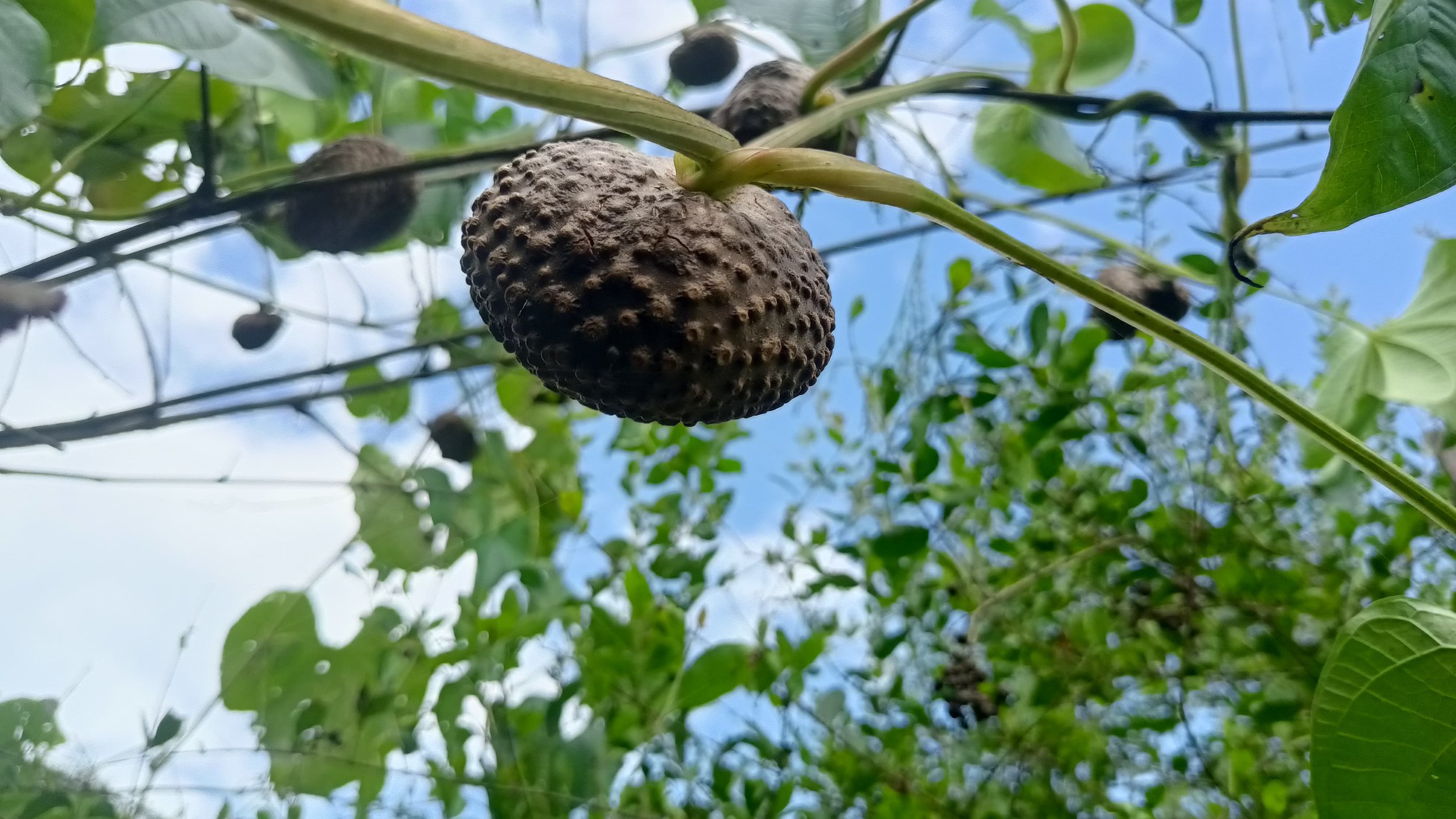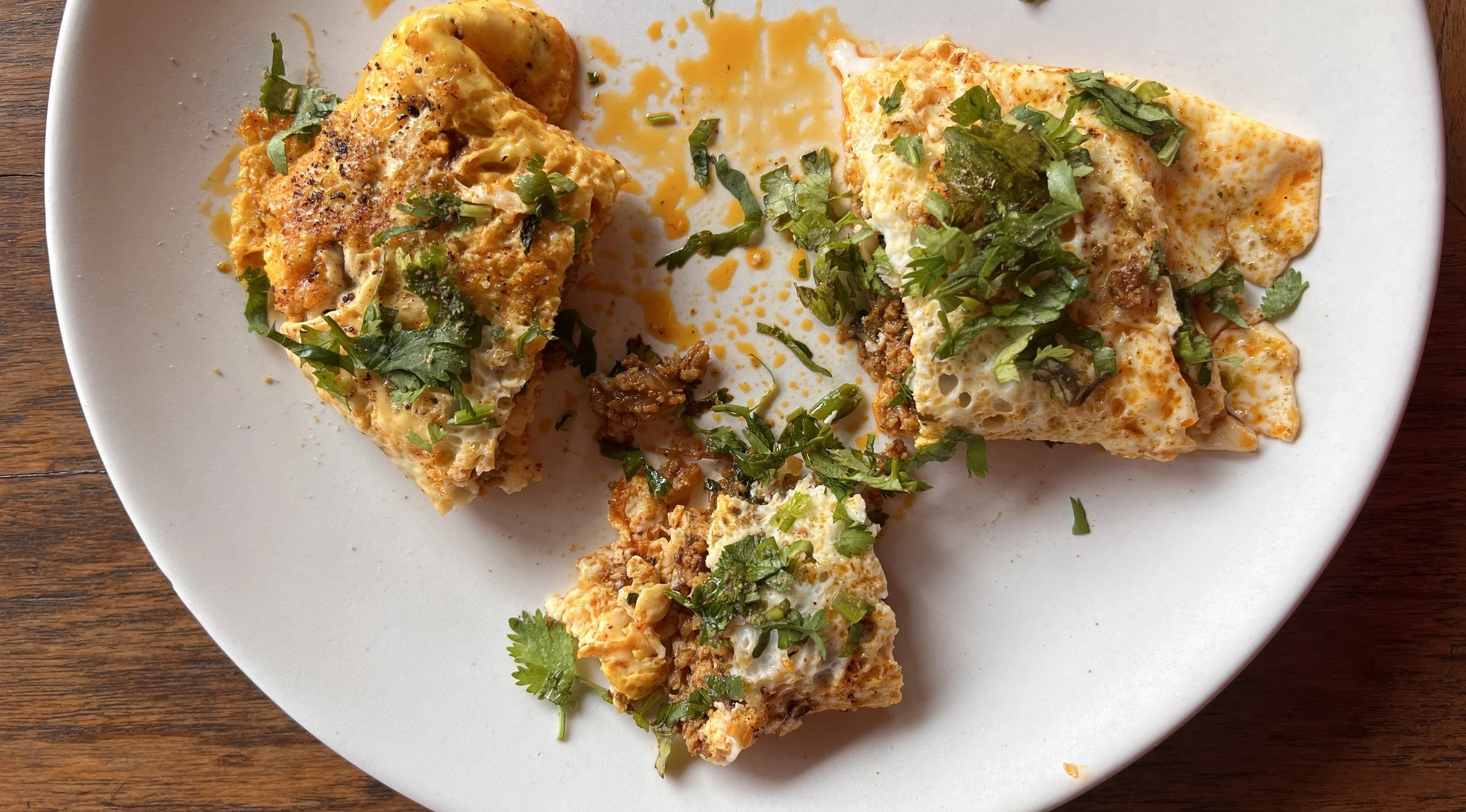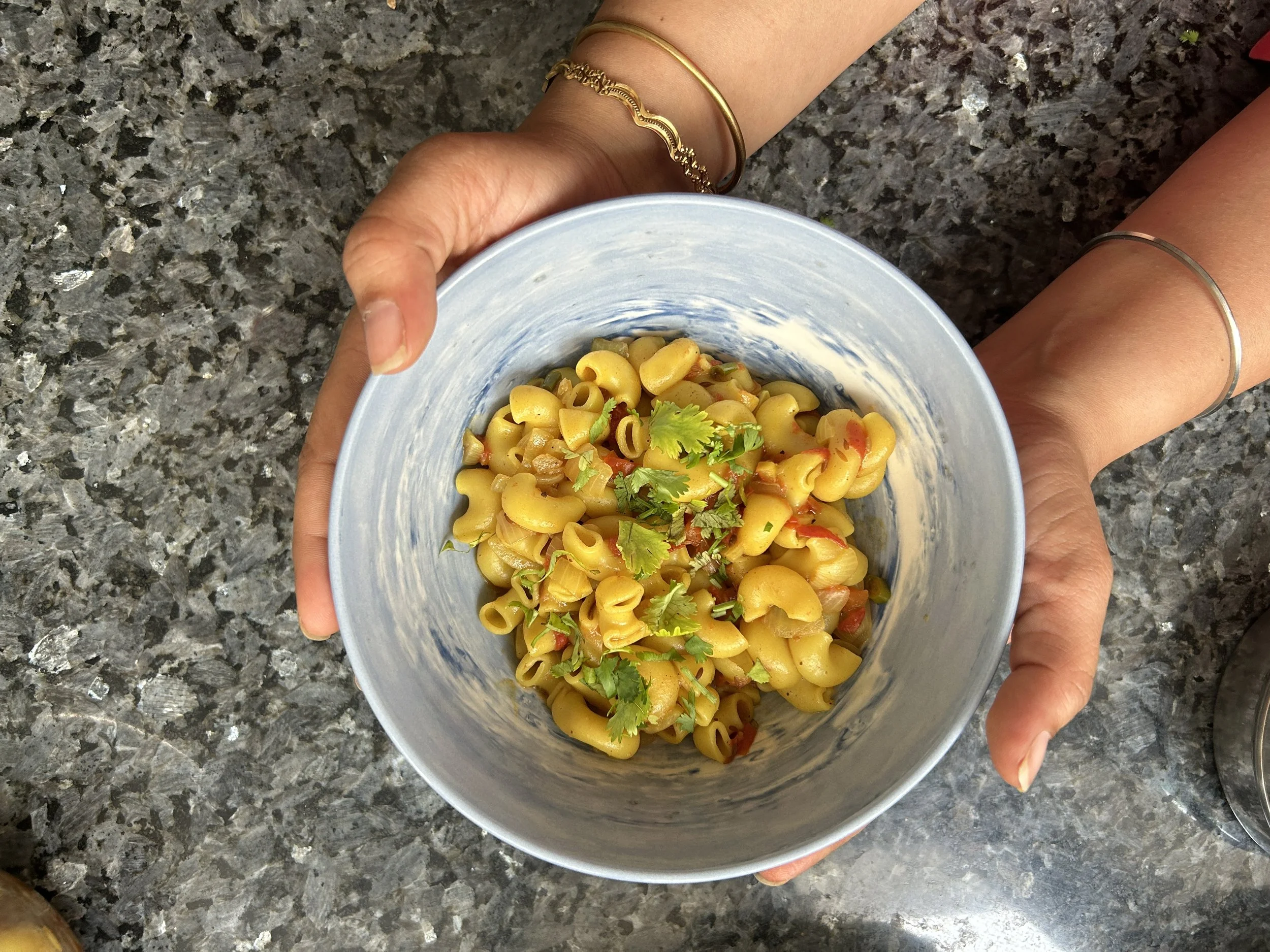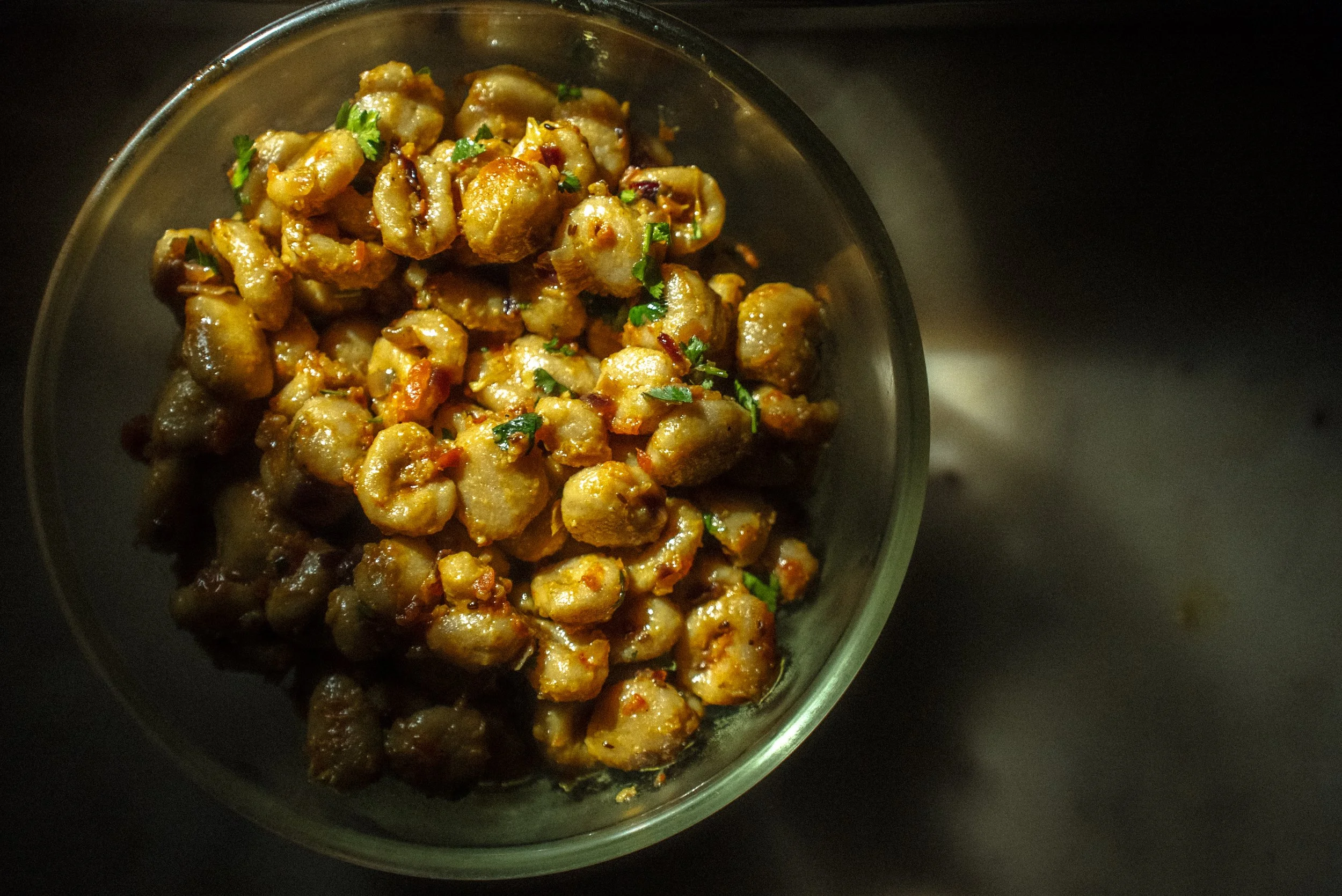Laet Konda Saag: A Monsoon Staple for Odisha's Gond Tribe

Wild tubers have been a dietary staple of tribal communities in Odisha’s Nuapada district for generations. One such delicacy is laet konda saag, made from air potato — a wild tuber variety foraged during the monsoon. Abhijit Mohanty shares the story and recipe for this cherished dish.
In Western Odisha’s Nuapada district, the monsoon brings with it many wild tubers, which make their way onto people’s plates.
Communities in the region depend on rainfed agriculture and edible wild foods harvested from nearby forests to sustain their livelihoods. Among these forest foods, tubers feature prominently in traditional recipes. In the monsoon, this tuber is usually the air potato, locally known as laet konda (in the regional dialect, laet means "creeper" and konda means "tuber"). The plant has heart-shaped leaves and a vine-like structure, and is often found in forested areas, foothills, and along the borders of kitchen gardens and uncultivated lands.
In Odisha, air potato is called laet konda, and features in monsoon dishes. Photos: Abhijit Mohanty
The plant produces aerial bulbs on its vines that resemble small, round potatoes with a warty surface speckled with light brown spots.
Women and children from the Chuktia Bhunjia, Gond, and Kondh tribal communities typically harvest laet konda during the monsoon season, beginning in June. “Around 20 years ago, many people used to eat laet konda,” recalls Rajani Majhi, a 42-year-old Gond woman from Pethiapali village. “Long before potatoes became common in kitchens, laet konda was our go-to ingredient.”
The laet konda plant produces aerial bulbs on its vines that resemble small, round potatoes with a warty surface speckled with light brown spots. A single vine can yield 10 to 50 tubers, each weighing between 100 and 300 grams. Additionally, 5–10 kg of tubers can be harvested from underground, although the vine-grown tubers are more flavorful.
Nutritionally, laet konda is rich in potassium, calcium, iron, magnesium, phosphorus, and zinc. Its high fibre and protein content aid digestion, regulate blood sugar levels, support gut health, and promote heart and muscle function. It also has anti-inflammatory properties and is considered beneficial for people with rheumatic conditions.
Laet konda is consumed across many Indian states and goes by various vernacular names: suralu, zami kanda, genthi (Hindi), dukar kanda, suvariya (Gujarati), kuntu genasu (Kannada), kattu kachi (Malayalam), pannu pilangu (Tamil), nela dumpa (Telugu), banalu (Bengali), pitalu (Odia), karamdo (Konkani), gathalu, manu kand, kukar kand (Marathi), and kathalu, mati alu (Assamese). The harvesting period of laet konda varies across the country.
In Odisha, it is harvested during the onset of monsoon in June. Many traditional recipes use laet konda. Some simply boil and mash it, while others fry it in oil. Among the Gond tribe, the most popular preparation is laet konda saag, cooked with brinjal and potato.
“I was about 7 or 8 when I started going into the forest with my mother to harvest laet konda,” says Rajani, who learned to make laet konda saag from her mother, who passed away six years ago. The dish is typically enjoyed with rice or mandia pej — a finger millet gruel that is a staple of the Gond tribe. Rajani grows the plant along the fence of her kitchen garden. "It is a highly resilient plant — it can grow in less fertile soil, withstand high temperatures, and attracts fewer pests. Generally, it tastes like potato, with a mild, starchy aroma similar to bamboo shoots, and a slightly sticky texture,” she says. Cooking it properly reduces the stickiness and enhances its flavor.
“Tubers like laet konda give us strength and stamina,” she says. “After eating it, we can work on the farm for long hours.”
RAJANI MAJHI’S RECIPE FOR LAET KONDA SAAG
Ingredients
300 g laet konda (Air potato)
150 g potato
150 g brinjal
2 medium sized onions
1/2 tsp turmeric powder
1/2 tsp red chili powder
100 g of mustard oil
Salt, to taste
Method
Peel the skin of laet konda and remove the greenish layer which comes beneath it. Thoroughly wash the sliced laet konda with water. Then boil it for around 20 minutes. Drain the water from laet konda.
Heat mustard oil in a kadhai, and chopped onions. Sauté until they turn brown.
Add the boiled laet konda. Keep sautéing for around 4-5 minutes to reduce its sticky texture.
Then add chopped brinjal and potato and sauté for 5 minutes.
Now, add turmeric, red chili powder and salt. Mix it well. Put some water and let it boil in a low flame. Maintain a thick gravy.
Serve it with rice, finger millet gruel or roti.
Abhijit Mohanty is a Bhubaneswar-based independent journalist who reports on sustainable food, culture, livelihood, women's leadership and climate change with a special focus on tribal and other marginalized communities of India.
ALSO ON GOYA












